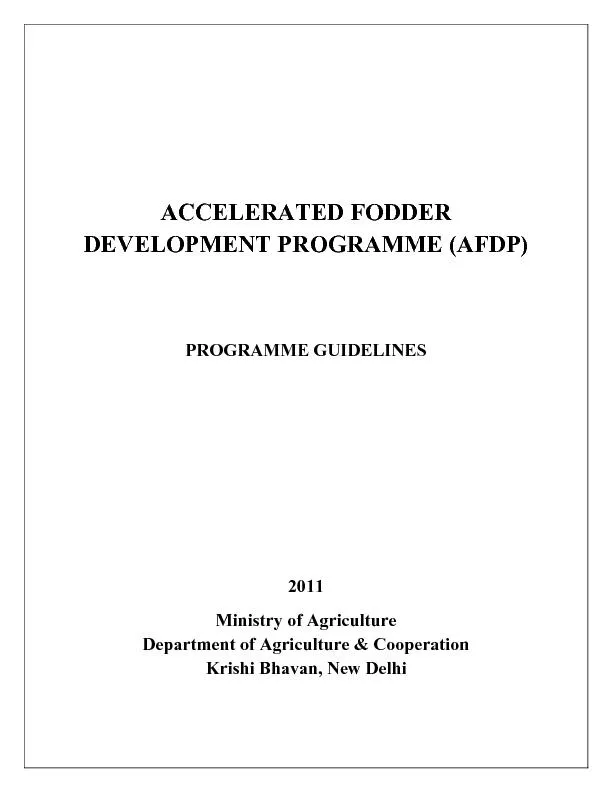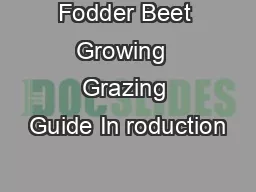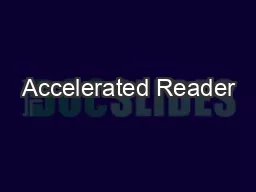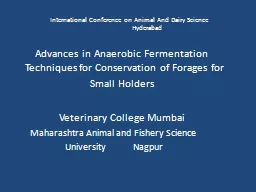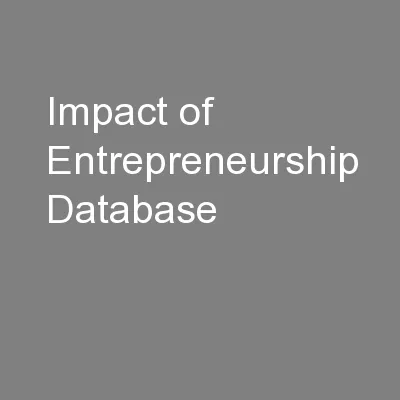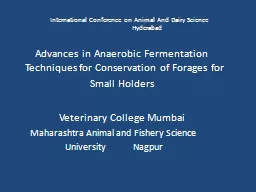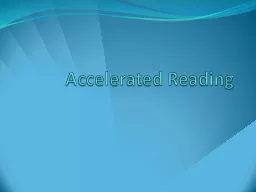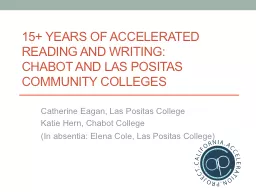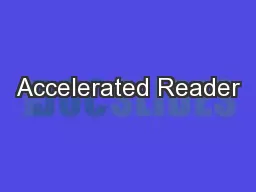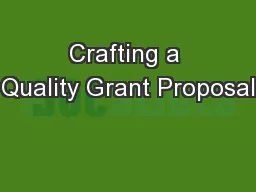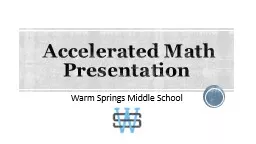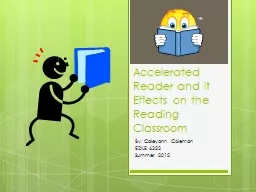PDF-ACCELERATED FODDER
Author : yoshiko-marsland | Published Date : 2016-06-06
DEVELOPMENT PROGRAMME AFDP PROGRAMME GUIDELINES 2011 Ministry of Agriculture Department of Agriculture Cooperation Krishi Bhavan New Delhi INDEX Sl No Particulars Page
Presentation Embed Code
Download Presentation
Download Presentation The PPT/PDF document "ACCELERATED FODDER" is the property of its rightful owner. Permission is granted to download and print the materials on this website for personal, non-commercial use only, and to display it on your personal computer provided you do not modify the materials and that you retain all copyright notices contained in the materials. By downloading content from our website, you accept the terms of this agreement.
ACCELERATED FODDER: Transcript
Download Rules Of Document
"ACCELERATED FODDER"The content belongs to its owner. You may download and print it for personal use, without modification, and keep all copyright notices. By downloading, you agree to these terms.
Related Documents

